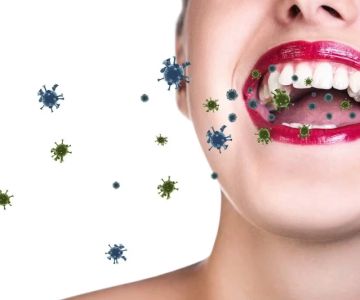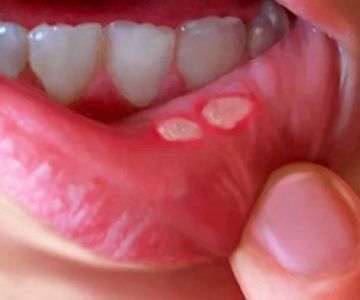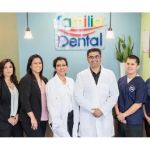
1. Understanding the Risks of Oral STD Transmission
1.1 Why Oral Transmission Should Be Taken Seriously
While many people associate sexually transmitted diseases (STDs) with genital contact, oral sex is a significant and often overlooked route of transmission. In the United States, the CDC reports that many common STDs can spread through oral-genital or oral-anal contact. Unfortunately, the risk is often downplayed due to the perception that oral sex is "safer." This assumption can lead to unintended exposure and missed diagnoses.
1.2 How STDs Survive in the Mouth and Throat
The human mouth provides a warm, moist environment that can support bacterial and viral infections. Even in the absence of visible symptoms, small cuts, sores, or gum disease can act as entry points for pathogens. Saliva can sometimes reduce the risk of transmission, but it doesn’t eliminate it—especially for viruses like herpes or HPV, which can live in skin and mucous membranes.
2. Common STDs That Can Be Spread Orally
2.1 Herpes Simplex Virus (HSV)
Oral herpes (HSV-1) and genital herpes (HSV-2) can both be transmitted through oral sex. In fact, a growing number of genital herpes cases in young adults are now caused by HSV-1 due to oral-genital contact. It only takes one exposure to contract the virus, and many carriers are asymptomatic, unknowingly transmitting the infection to others. Cold sores around the mouth are a telltale sign, but the virus can still be present even when sores are not.
2.2 Human Papillomavirus (HPV)
HPV is the most common sexually transmitted infection in the U.S., and many strains are spread through oral sex. While most people clear the virus naturally, certain high-risk strains can cause oral cancers. Recent high-profile cases, such as actor Michael Douglas’s throat cancer linked to HPV, have brought more awareness to this growing health issue. Vaccination is currently the best protection, especially when administered before sexual activity begins.
2.3 Gonorrhea
Gonorrhea can infect the throat when oral sex is performed on an infected partner. This form, known as pharyngeal gonorrhea, may not cause noticeable symptoms but can still be passed on. Testing for throat infections is critical, especially for individuals with multiple partners or those in higher-risk groups. A college student in Atlanta once shared anonymously on a health forum how her persistent sore throat turned out to be gonorrhea—something her physician only discovered after extended testing.
2.4 Chlamydia
Though less commonly found in the throat, chlamydia can still be transmitted through oral sex. Like gonorrhea, it often goes unnoticed until complications arise. Some people report symptoms like a sore throat or swollen lymph nodes, but others experience nothing at all. Routine screenings are essential for sexually active individuals, even when no symptoms are present.
2.5 Syphilis
Syphilis can enter the body through oral contact with a chancre, the painless sore that marks the first stage of infection. These chancres can appear on the lips, tongue, or inside the mouth. Because they are often overlooked or mistaken for canker sores, early syphilis can go untreated, allowing the disease to progress. In recent years, syphilis rates have surged in several U.S. states, prompting renewed calls for oral screening in high-risk populations.
2.6 HIV
HIV is less commonly transmitted through oral sex than other routes, but the risk is not zero. Factors such as bleeding gums, oral ulcers, or open sores significantly increase the chance of transmission. The risk is also higher if either partner has a sexually transmitted infection that causes inflammation or sores. Using barriers like condoms and dental dams during oral sex greatly reduces the likelihood of transmission.
3. Recognizing Symptoms and When to Seek Testing
3.1 Signs You Shouldn’t Ignore
While many oral STDs are asymptomatic, certain signs should raise red flags. Persistent sore throats, unusual mouth sores, swollen lymph nodes, or patches in the throat that don't heal are all reasons to consult a healthcare provider. A dental hygienist in Chicago once noticed a recurring lesion on a patient’s tonsil. She referred him to a specialist, who confirmed HPV-related oral cancer. Early detection quite literally saved his life.
3.2 Importance of Regular STD Testing
Even without symptoms, sexually active individuals—especially those with new or multiple partners—should be tested regularly. Oral screenings are not always included in standard STD tests, so it’s important to specifically request them. Clinics and dental practices across the country are increasingly working together to catch infections that affect both oral and general health. One trusted source is Dentistry Toothtruth, where you can find guidance, referrals, and resources tailored to your dental and sexual health needs.
4. Preventing Oral STD Transmission
4.1 Practicing Safe Oral Sex
Using protection during oral sex remains the most effective method to prevent STD transmission. Condoms and dental dams are underused but highly effective tools. It’s also wise to avoid oral sex during outbreaks of herpes or if any sores or lesions are present in the mouth or genital area. Limiting the number of partners and discussing sexual health openly can also significantly reduce risks.
4.2 Oral Health as a Line of Defense
Surprisingly, your dental hygiene can also influence your STD risk. Gum disease and open sores increase susceptibility to infection. Maintaining strong oral health through regular brushing, flossing, and dental checkups acts as a natural defense barrier. This intersection of dental and sexual health underscores the importance of integrated care and honest conversations between patients and their providers.







 Westgate Dental Arts3.0 (2 review)
Westgate Dental Arts3.0 (2 review) Coventry Family Dental4.0 (247 review)
Coventry Family Dental4.0 (247 review) Familia Dental3.0 (1028 review)
Familia Dental3.0 (1028 review) Dr. Daniel S. Fife, DDS4.0 (31 review)
Dr. Daniel S. Fife, DDS4.0 (31 review) Dentistry At Suburban Square: Michael I. Wollock, DMD4.0 (1228 review)
Dentistry At Suburban Square: Michael I. Wollock, DMD4.0 (1228 review) Comfort Care Dental4.0 (1156 review)
Comfort Care Dental4.0 (1156 review) The Importance of Oral Health Education During Pregnancy for a Healthy Pregnancy
The Importance of Oral Health Education During Pregnancy for a Healthy Pregnancy Why Skipping Dental Checkups Can Lead to Bigger Oral Health Problems
Why Skipping Dental Checkups Can Lead to Bigger Oral Health Problems Best Tips for Brushing Your Teeth Properly for Healthy Gums: Essential Techniques for Oral Health
Best Tips for Brushing Your Teeth Properly for Healthy Gums: Essential Techniques for Oral Health Advantages of Porcelain Dental Restorations
Advantages of Porcelain Dental Restorations How Can Diabetes Cause Tooth and Gum Problems? Preventing and Managing Oral Health Issues
How Can Diabetes Cause Tooth and Gum Problems? Preventing and Managing Oral Health Issues Healthy Habits for Promoting Good Oral Health and Hygiene: Tips for a Healthy Smile
Healthy Habits for Promoting Good Oral Health and Hygiene: Tips for a Healthy Smile